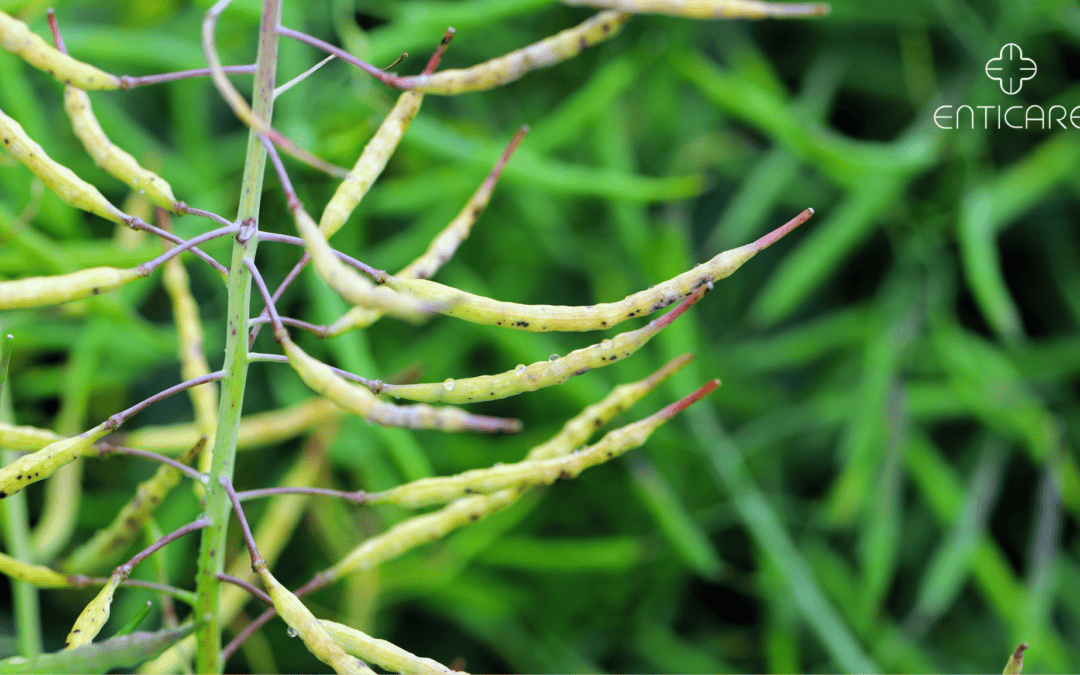Ever experience a sudden onset of allergy symptoms after a refreshing summer storm or a brisk fall hike? The culprit might surprise you. It’s not always the colorful pollen you suspect, but a microscopic mold thriving in the background – Alternaria tenuis.
Alternaria tenuis isn’t a weed itself, but a fungus commonly found on decaying leaves and organic matter. While it plays a crucial role in nature’s recycling process, its airborne spores can trigger allergy symptoms in people sensitive to mold. This fungus is present worldwide, including throughout North America, making it a potential allergy concern for many.
Origin in North America
Unlike invasive species, Alternaria tenuis isn’t an introduced element. It’s a natural resident in various ecosystems across North America. Its presence in soil, compost piles, and on decaying leaves increases the chances of encountering its spores and experiencing allergy symptoms.
Season
If you experience allergy symptoms in late summer and early fall (August to October), Alternaria tenuis spores could be the trigger. This coincides with increased moisture and humidity, creating ideal conditions for fungal growth and spore release. Additionally, activities that disturb decaying leaves, like mowing or raking, can stir up these spores and worsen allergy symptoms.
Signs and Symptoms
If you have an Alternaria tenuis sensitivity, you might experience these common symptoms during periods of high spore count:
- Runny or stuffy nose
- Itchy, watery eyes
- Sneezing
- Coughing
- Scratchy throat
- Postnasal drip (drainage down the back of the throat)
- Headaches (in some cases)
- Facial swelling (in severe cases)
- Difficulty breathing (in severe cases)
Causes
Similar to other allergies, Alternaria tenuis sensitivity arises from an overreaction by your immune system. When you inhale Alternaria tenuis spores, your immune system mistakenly identifies them as a threat and releases chemicals that trigger allergy symptoms.
Prevention
Here are some tips to minimize your exposure to Alternaria tenuis spores and manage allergy symptoms:
Track mold spore counts: Mold spore counts aren’t always reported alongside pollen counts. Limit outdoor activities when Alternaria tenuis spore counts are high.
Stay indoors during peak mold spore hours: Mornings and evenings are generally the worst times for Alternaria tenuis allergies.
Keep windows closed: Especially during peak mold spore times.
Change clothes after being outdoors: Spores can cling to your clothes, so take them off and wash them after spending time outside in areas with high organic matter.
Shower before bed: This removes spores from your hair and skin.
Use air purifiers: Air purifiers with HEPA filters can help trap mold spores indoors.
Reduce moisture in your home: Use dehumidifiers to control indoor humidity levels, as this can discourage mold growth.
Minimize exposure to decaying leaves: Avoid activities that disturb fallen leaves or compost piles if they worsen your allergies.
Risk Factors
While anyone can develop an Alternaria tenuis sensitivity, certain factors can increase your risk:
Family history of allergies: If you have a family history of allergies, you’re more likely to develop allergies yourself, including Alternaria tenuis.
History of hay fever: People with hay fever are more prone to develop allergies to other airborne allergens like mold spores.
Asthma: Alternaria tenuis spores can worsen asthma symptoms.
Exposure to damp environments: Living or working in damp environments with poor ventilation can increase your exposure to mold spores.
Treatment
There’s no cure for Alternaria tenuis sensitivity, but several treatment options can manage your symptoms and improve your quality of life:
Over-the-counter medications: Antihistamines can help alleviate allergy symptoms like itchy eyes, runny nose, and sneezing. Decongestants can help clear nasal congestion.
Nasal corticosteroids: These prescription medications can effectively reduce inflammation in the nasal passages, offering long-term relief.
Allergy shots (immunotherapy): This long-term treatment involves gradually increasing your exposure to Alternaria tenuis spores over time, desensitizing your immune system and reducing your reaction to the allergen.
Alternaria tenius weed allergies, with their intricate origins and diverse manifestations, demand recognition and understanding. This blog, crafted to educate and empower, invites you to traverse the multifaceted landscape of Alternaria tenius weed allergies with newfound knowledge. May your journey toward a healthier, allergen-conscious lifestyle be marked by informed choices and well-being. Enticare: Your path to a healthier you. Explore our range of treatments and start feeling your best. Call us today!

